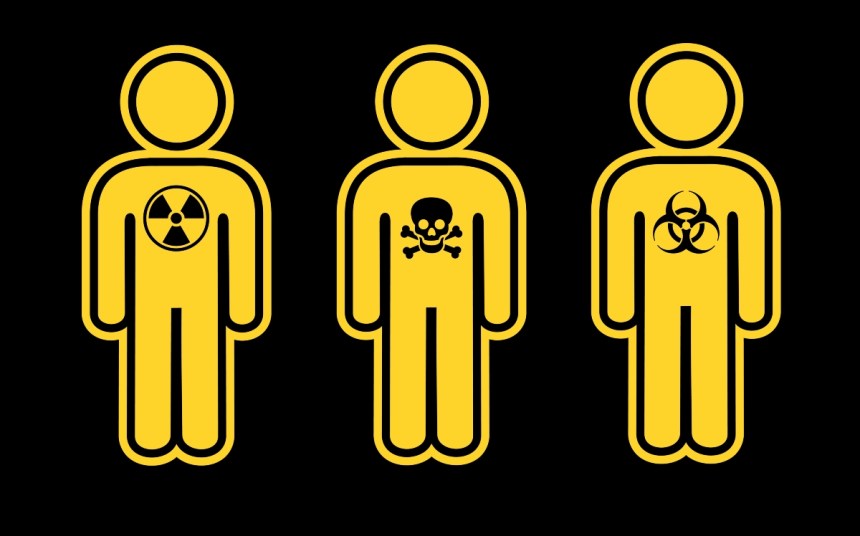3 Toxic Personality Types Exist, Say Experts — Here’s How To Handle Them
Because bad behavior needs to be addressed, not accepted.

According to a recent study co-sponsored by Self.com and Today.com, 84 percent of women have at least one negative person in their life. This high number may sound shocking — but if you’re a part of that 84 percent, you’re likely not surprised. People are complicated, and relationships can be fraught — particularly among women, whose natural intuition and high emotional awareness serves us well in general, but can make certain unions feel like minefields.
But there’s a difference between having a rough patch with a friend and having a chronically toxic friend. The latter is more a burden than a support, and can do real emotional harm. And the experience isn’t limited to friendships; bosses, colleagues, neighbors, and family members can also be toxic. So what, exactly, is a toxic person, and what do you do if you’re friends with one? Below, experts define the most common ‘toxic personality types,’ and offer easy ways to stand up for yourself when confronted with them.
Toxic Personality Type: “The Narcissist”
Narcissism, or an inflated sense of self-importance, is marked by “3D” behavior: denial, defensiveness, and dismissiveness, says expert Wendy Behary. “A narcissist might say, ‘I never said that; you never listen.’ Then they get defensive, downplaying it as no big deal, and dismiss your feelings by walking away.” A fourth “D”? Devaluing you, by saying you’re crazy. “Knowing their behavior is about their damaged psyche helps you reclaim your truth.”
How To Handle It: Raise your voice
If they’re willing to change, Behary suggests “empathetic confrontation.” “This isn’t an endorsement of their behavior; rather, it uses your understanding of them to communicate effectively.” For example, since narcissists are hypersensitive to criticism, you might say: “This isn’t meant to be a criticism, but I’m allowed to be disappointed when you don’t call if you’re going to be late.” Or since they’re often leaders: “You’re used to being the boss, but this isn’t working in our home.” It’s also vital to give yourself space, as in: “That tone of voice is not okay; I’m not engaging right now.” It’s key to express what you need.
Toxic Personality Type: “The Passive-Aggressive”
This type of behavior is an indirect way of expressing anger. “It’s often sly and hard to spot,” says expert Loriann Oberlin. “For example, they might be rude, then tell you, ‘I was just joking’ or ‘You’re so sensitive.’” If you see a pattern of stonewalling with silent treatment, trust your gut that it is them (and not your imagination).
How To Handle It: Start with honesty
Passive-aggressive people tend to avoid taking responsibility. “For example, if you’re ordering food, they might say, ‘I don’t care, get anything.’ But when you eat, they don’t like it and imply it’s your fault.” When they avoid expressing their true feelings, you might say, “It actually helps me when you tell me what you want.” The key is opening the lines of communication so they no longer hide their feelings through “covert anger” and learn to express themselves honestly and respectfully.
Toxic Personality Type: “The Critic”
While constructive criticism is solution-oriented, someone who’s chronically judgmental is often bullying, says expert Stephanie Sarkis, Ph.D.
How To Handle It: Set healthy limits
Since they often push you to see how much you’ll take, she advises deciding what your line in the sand is, then saying, for example, “There’s something I need to talk to you about: It’s not okay when you say X to me.” Sarkis says to never feel guilty for having boundaries.
You Deserve Better
Whether you’re dealing with a narcissist, passive-aggressive type, or chronic critic, Sarkis urges reminding yourself that you deserve three things: courtesy, love, and respect. Perhaps the central takeaway is that just because someone treated you unfairly, the pattern doesn’t have to continue. “I’ve seen so many people go on to have healthy, fulfilling relationships — your destiny is what you decide.”
Meet the experts
- Wendy Behary, author of Disarming the Narcissist (Buy from Amazon, $13.69), is the founder of The Cognitive Therapy Center of NJ and The Schema Therapy Institutes of NJ-NYC-DC.
- Loriann Oberlin, MS, co-author of Overcoming Passive-Aggression (Buy from Amazon, $13.59) is a Maryland-based therapist. She writes for the Psychology Today blog The Full Picture.
- Stephanie Sarkis, PhD, author of Gaslighting and Healing from Toxic Relationships (Buy from Amazon, $16.19), is a psychotherapist with over two decades of experience.
A version of this article originally appeared in our print magazine, Woman’s World.












